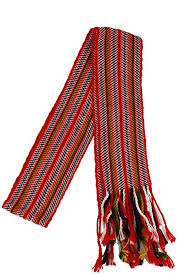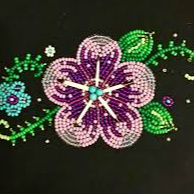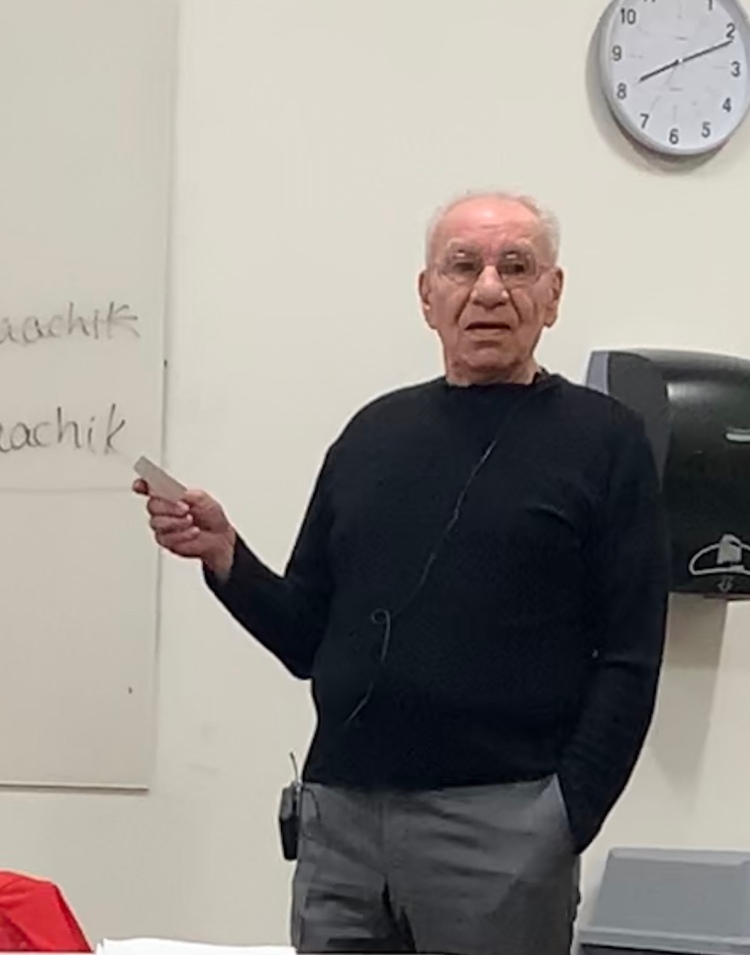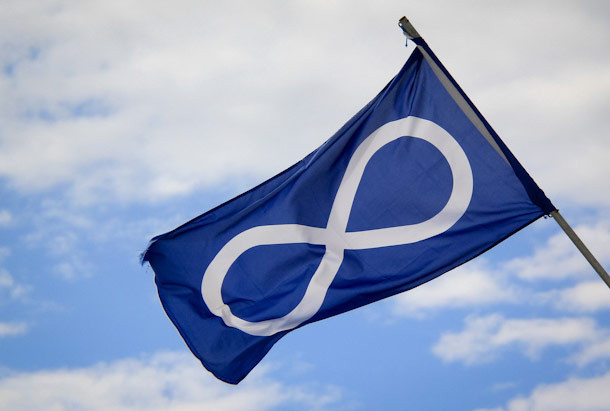The genesis of the Michif peoples and language was told to Brousse by his grandparents (born 1876 and 1886). The information he gives below is also told by other Michif speakers who agree that language was given to the Michif peoples by the Creator/God. The genesis of the Michif person/nation is synonymous with the genesis of the Michif language. Both the language and the nation are creations of the Creator/God— and are symbiotic to each other.
Throughout history, separate nations have come together and created mixed-bloods as they colonized lands. However, the Michif peoples are unique as this coming together created their language, consciousness, and culture. For example, as the English and French colonized the world, including North America, mixed-blood people were created. However, because the language and nation are a gift from the Creator/God, no other distinct people with unique language and culture have been created as with the Michif. The joining, or fusion, of two distinct nations with very opposite philosophies and world views occurring over eight generations, created the language. This fusion happened first through generations of mixed-bloods (metis)— who were and still exist in the east— the joining of a French man (Voyageur) and a Cree woman. The next four generations created the Michif language and people. It was not just moving west, as Irish, English, and Scottish people in the western plains also married Indigenous women, but no unique language/culture emerged. These people, like those in the east, are metis but not Michif. Instead, because the Michif were spiritually destined to become the New Nation, they were the only mixed-bloods able to respond to these conditions in a way that created unique nationhood. This spiritual destiny is because the Creator/God gifted them a specific and unique language, culture, and collective consciousness. The development of the Michif language, consciousness, and culture led to Michif nation-building, and that led to:
- Collective Michif action
- Michif Territory/homelands
- Collective History
All of these are the necessary elements, or foundation, of nationhood. Therefore, Michif individuals owe their existence to the Creator/God as who and what they are individually is a birthright. The Michif Nation, made up of Michif individuals, also owes its existence to the Creator/God. A government cannot legislate this identity and nationhood; the government can only recognize what is already in existence.

This development of the language provided the foundation for collective consciousness, which then led to the formation of language/culture, territory, and government. However, especially this consciousness led to the idea of peoplehood, where the Michif peoples saw themselves as ‘us’ and other groups as ‘them’ demonstrating an understanding of collective identity. After this idea of ‘us’ versus ‘them’ specific collective Michif actions began, such as: identifying other Michif peoples and areas of occupation. The Michif also began to defend themselves against other groups, particularly against the French and the English. Collective actions also included meetings to discuss and develop a governmental structure and laws as in the buffalo hunt and other forms of government. The next collective action was the occupation of what would become the Michif homeland.
As a result of this development, the Michif people also evolved through several communities. Some of these communities were huge, with highways between them and the moccasin telegraph, which was very useful. These settlements and territories, or homelands, begin from around Rainy Lake and go west to the foothills and south to the Missouri River, and North to the treeline (there are a small number of Michif people living in the woodland area). Although some assume that all Michif were born and raised in Red River, there were viable Michif communities throughout the homelands. While Red River can be seen as the centre point or capital: the Michif homeland is vast.
The Michif language and its genesis demonstrates the essence of Michif culture and philosophy. The Michif language was created during the mixed-blood/metis era, and this creation is fascinating and revolutionary as the language needed to represent both European (French) and North American (Plains Cree) philosophies and cultures. In its creation, the language also needed to represent the Michif peoples. The Michif people and Nation have a foot on both continents as they live in their unique world. This creation of the language was because, as a French man lived with a Cree woman, communication was necessary. This communication would also reflect an understanding of each other’s ways and would bring their own culture and values to the relationship. Hence the genesis of the Michif language with French nouns and Cree verbs showing not only an understanding but also an acceptance of each’s language as an element of Michif. The Michif language has both linguistic and spiritual aspects encompassing two world views through this alignment of verbs and nouns. This alignment differs from pidgin languages, which are a simplified communication between two or more groups who lack a common language. Instead, the Michif language developed through incorporating complex elements of both Cree and French.
This language did not die, but because ke-puknigwataaw—the language was released onto earth. The Spirit World created the Michif peoples like it created all other nations and languages. Language is central to nationhood. During the four generations of the formation of Michif language and peoples two other events are worth noting:
- White men (English/French/Irish etc.) would not and could not accept the Michif peoples’ ways and nationhood (racism)
- Although the Michif lived amongst the Cree and other Indigenous peoples, it was always known and accepted by all that the Michif were not them, and that they were not Michif, there was always a difference.
During this time, the Michif peoples became unique and distinguishable by both the Europeans and other Indigenous nations. Therefore, as a result of the coming together, the union of French men and Cree women, through the development of the Michif language, the Michif collective consciousness developed, resulting in Michif collective actions and Michif nation-building.
Dates also show the genesis of the Michif language and peoples. The Michif peoples were connected to the North West Company (NWC), and genealogy supports this. For example, Brousse’s grandfather, who raised him, was born in 1876 and his great grandfather: Louissant Flammand was born in Red River and raised his family there and in Fort Qu’Appelle. Louissant’s father was the first generation: a voyageur marrying a Cree woman. By 1821 people were speaking Michif and saw themselves as a separate nation when the NWC and Hudson’s Bay Company (HBC) combined. The events, such as with the battle of Seven Oaks in 1816, did not create the Nation but instead are times where the Michif people demonstrated their nationhood. It can be said that the Michif language and Nation were in existence in the late 1700s.


